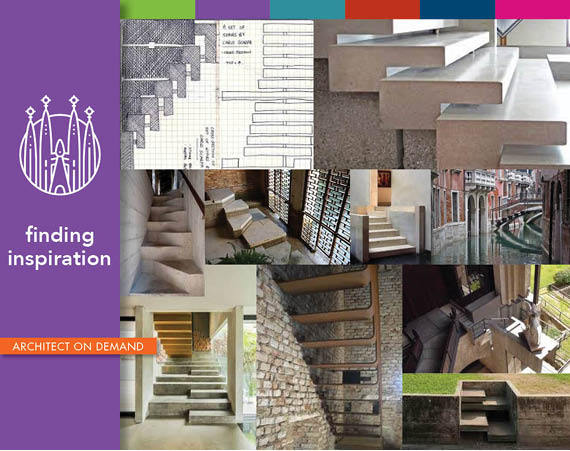The work of architect Carlo Scarpa has been an inspiration and a point of reference in building a life that reveals who I am without pretenses.
I first heard of Carlo Scarpa as an architecture student. I admired the photographs of his amazingly beautiful details. I appreciated the way he made commonplace materials, such as concrete, appear opulent. But I never got much deeper than that. The theory behind the work was too complex for me to grasp.
Then I visited Castlevecchio Museum in Verona and was profoundly moved. It became a place I privately associate with complete and utter beauty. It gave me direction.
Since I am not a scholar, I will not attempt to analyze the work of architect Carlo Scarpa. Instead, I will share intimate revelations derived from it. It guides me
to allow for soul-searching:
Carlo Scarpa worked slowly. His drawings reveal the learning process of putting something down on paper in order to be able to see it. That's how he managed to detail precisely something that was not tangible yet. That's how he patiently made room for the unknown. He entrusted time with continual revisions that allowed for maturation. The drawings by Carlo Scarpa attested to the depth of inquiry through lines and colors.
to allow for experimentation:
Carlo Scarpa separated useless and accidental from real by means of relentless experimentation. He was very curious. Asking questions, he let answers to ripen. He allowed for one thing trigger something else. His every project is open-ended, and all of them connected together create one narrative.
to allow for poetry:
He rented a garden to have a tree growing there even in his absence -- how endearing! As an architect, Carlo Scarpa contemplated ephemeral thought into a solid form. In his work, each element was intended to support and enhance all the others in harmony. As Louis Kahn put it, he unified them to create "the sense of the wholeness of inseparable elements."
to allow for non-conformist rejection of stereotypes:
Carlo Scarpa paid attention to the space between the branches of a tree. He was estranged from style. Instead, the architect tenaciously observed and collected images. He observed, understood, and interpreted. Every object had to be beautiful, but not arbitrary. With clients, he did not impose but propose a basic idea in a form of a metaphor.
to allow for intangible to emerge:
Carlo Scarpa let mystery unfold as he journeyed toward deeper awareness with every project. He relied on the richness of the past experience. The architect regarded skillful craftsmen (cabinet-makers, stucco-workers, smiths) as essential repositories of knowledge. Carlo Scarpa planned on the page and then let go. He entrusted the process with the flexibility to make adjustments, to re-think solutions based on physical constraints as they occurred during execution.
Architect Carlo Scarpa has inspired me to search for truth by educating the senses. I would love to hear how you nurture your own identity. Please send your stories here.
Alla is an architect on demand advising DIY home improvement enthusiasts online.
This post originally appeared on allaDIYally.com
